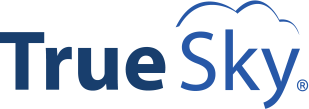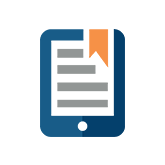Best Practices for Sales Forecasting
 Sales forecasting can be one of the most complicated business practices to master, but its rewards are invaluable.
Sales forecasting can be one of the most complicated business practices to master, but its rewards are invaluable.
Good sales forecasting allows you to make better informed decisions on future resource allocation, identify potential prospects or challenges, avoid unexpected cash flow problems, and much more.
But the benefit of sales forecasting depends largely on its accuracy. An inaccurate forecast is not going to help your business, and in fact will likely hurt it.
With that in mind, here are some best practices to take with you into the next sales forecasting period:
- Connect Your Forecast to Your Strategy
Your sales forecasting should connect to your business’s strategic plan. Integrating your organization’s priorities will help you focus in on what you need to measure.
- Consider Your Forecast Frequency — and Keep It Consistent
Some business forecast annually, but most are turning to rolling forecasts — reforecasting every quarter, month, or even week or day in some cases. Decide what frequency is right for you (download our free eBook, Finding Balance in Your Budget: How Frequently Should You Forecast? for more on this).
Whatever frequency you choose, keep it consistent for at least long enough to see if it is working for you. Committing to forecasting every month and following through is better than committing to forecasting weekly and getting overwhelmed. Pick a frequency that is realistic and stick with it. If you are not seeing the results you want, you can readjust.
- Keep Your Forecasting Simple
Similar to above, do not try to do too much all at once. It can be easy to want to track everything, but it is simply not realistic… or effective. If you focus on tracking five to 10 key performance indicators (KPIs) and forecasting from those, you will be able to put much more analysis into those core metrics, analyze sales history, etc. As a result, your forecasting will likely be more accurate.
- Involve the Sales Team in the Process
If you are sales forecasting, it makes sense to include the people who are doing the selling in the process. Use their input to improve the accuracy of your predictions. They can also help with interpreting data, client behavior, competitor trends, etc.
- Set Clear Expectations and Commitment
Discuss with your sales team what is being forecasted and make them aware of the targets, expectations, and timeframe. From there, you can set up incentives, have open lines of communication about challenges, and work with the team to achieve growth.
- Use Sales Forecasting Software for Greater Efficiency
Business automation software lets you save time on data entry and other administrative functions and put more time into analysis. Sales forecasting software can integrate data from your CRM, your ERP, and more. It can also allow to look at different probabilities quicker and view KPI metrics on your dashboard at a glance.
For instance, with our budgeting and forecasting tool, True Sky, you can project possible future scenarios and what-if scenarios. Our software makes sure that your data is accurate, so you can compare forecasts and budgets in detail, and even view different versions side by side. This can help you evaluate trends, prepare for different possibilities, and make more informed decisions.
Strong sales forecasting can help your business grow more quickly and effectively. Learn more about how True Sky can simplify the budgeting and forecasting process today. Call 1 855 878 3759 or visit www.truesky.com.



